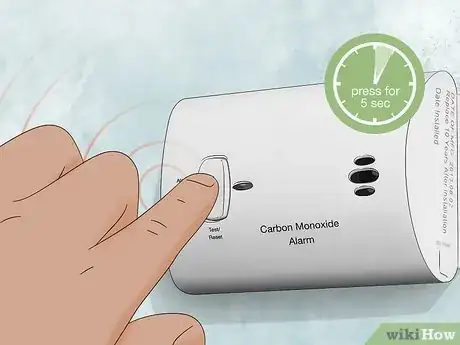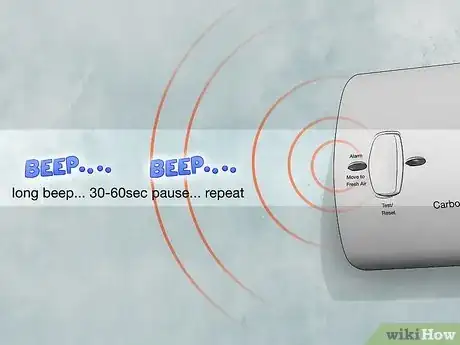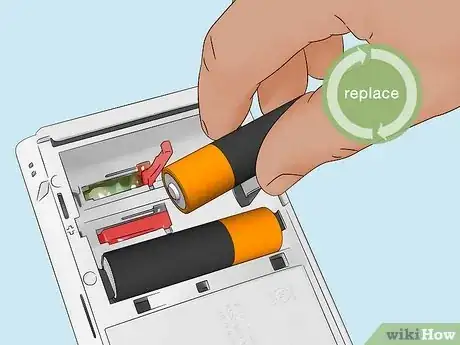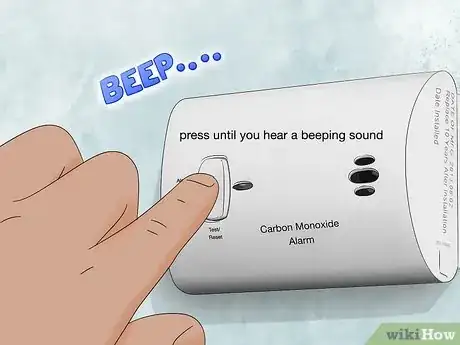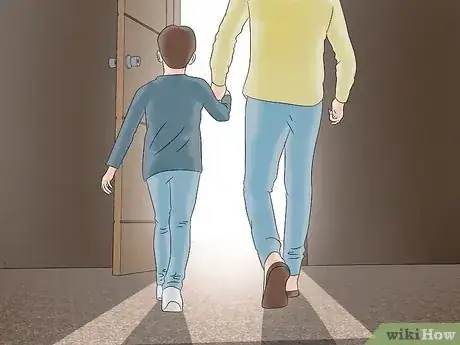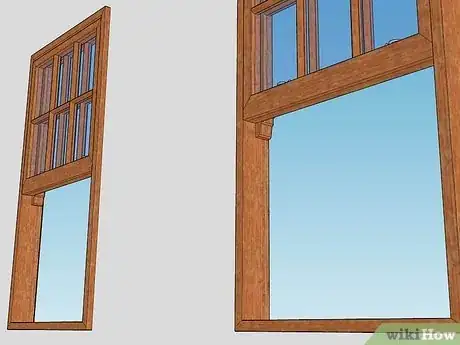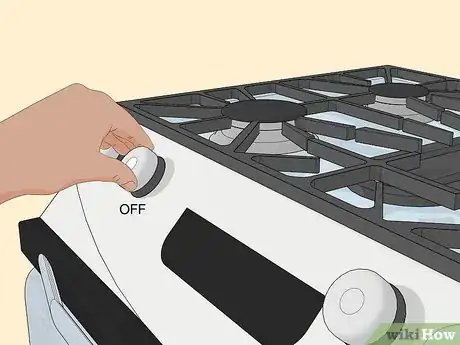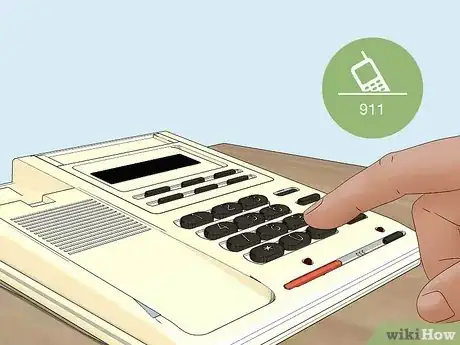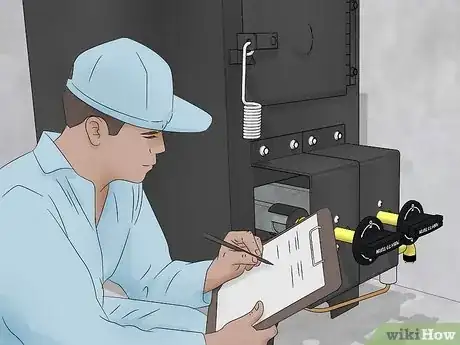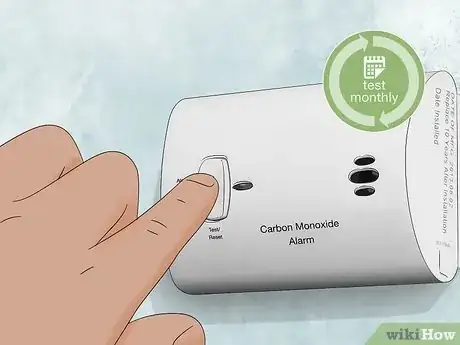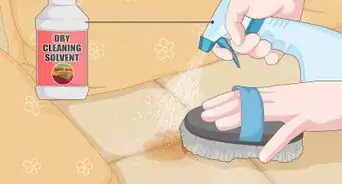This article was co-authored by wikiHow staff writer, Dan Hickey. Dan Hickey is a Writer and Humorist based in Chicago, Illinois. He has published pieces on a variety of online satire sites and has been a member of the wikiHow team since 2022. A former teaching artist at a community music school, Dan enjoys helping people learn new skills they never thought they could master. He graduated with a BM in Clarinet Performance from DePauw University in 2015 and an MM from DePaul University in 2017.
There are 12 references cited in this article, which can be found at the bottom of the page.
This article has been viewed 9,249 times.
Learn more...
We’ve all heard that harsh, incessant beeping sound when our carbon monoxide alarm’s battery is low. If you think that’s bad, wait until you hear the actual warning alarm! Carbon monoxide (CO) alarms are a life-saving technology, but that beep might make you wish you didn’t have one to begin with. In this article, we’ll show you how to turn off your carbon monoxide alarm (whether it needs new batteries or there’s an actual leak) and walk you through how to stay safe when it goes off for real. Sweet silence is just the push of a button away!
Things You Should Know
- Replace the batteries to silence the “low battery” beep, or press and hold the test/silence button to turn off the high-CO warning alarm.
- During an alarm, evacuate immediately and call emergency services. Make sure everyone is accounted for and check for CO poisoning symptoms.
- After the building is safe to re-enter, call a professional to examine your appliances and repair or replace the source of the CO leak.
Steps
Warnings
- Carbon monoxide (CO) is an odorless, colorless gas that mixes with air very easily. Prolonged exposure to CO will cause illness or death if left untreated.[20]⧼thumbs_response⧽
References
- ↑ https://simplisafe.com/files/ss_co_manual.pdf
- ↑ https://simplisafe.com/files/ss_co_manual.pdf
- ↑ https://www.tdi.texas.gov/blog/is-your-smoke-or-carbon-monoxide-alarm-chirping-heres-what-its-telling-you.html
- ↑ https://www.youtube.com/watch?v=m95LnZTRzY4&t=33s
- ↑ https://fireline.seattle.gov/2020/03/25/if-your-co-alarm-chirps-every-30-seconds-its-not-an-emergency-but-you-should-replace-the-co-alarm-a-s-a-p/
- ↑ https://youtu.be/m95LnZTRzY4?t=54
- ↑ https://www.batteriesplus.com/blog/power/test-smoke-detector-batteries
- ↑ https://plumbertip.com/carbon-monoxide-detector-beeping/
- ↑ https://www.romper.com/p/what-to-do-when-your-carbon-monoxide-alarm-goes-off-besides-freak-out-18660947
- ↑ https://www.safewise.com/home-security-faq/carbon-monoxide-detector/
- ↑ https://www.safewise.com/home-security-faq/carbon-monoxide-detector/
- ↑ https://www.austintexas.gov/page/carbon-monoxide-safety
- ↑ https://www.romper.com/p/what-to-do-when-your-carbon-monoxide-alarm-goes-off-besides-freak-out-18660947
- ↑ https://www.safewise.com/home-security-faq/carbon-monoxide-detector/
- ↑ https://www.mayoclinic.org/diseases-conditions/carbon-monoxide/symptoms-causes/syc-20370642
- ↑ https://www.safewise.com/home-security-faq/carbon-monoxide-detector/
- ↑ https://www.batteriesplus.com/blog/power/test-smoke-detector-batteries
- ↑ https://plumbertip.com/carbon-monoxide-detector-beeping/
- ↑ https://www.nfpa.org/Public-Education/Staying-safe/Safety-equipment/Carbon-monoxide
- ↑ https://www.nfpa.org/Public-Education/Staying-safe/Safety-equipment/Carbon-monoxide

